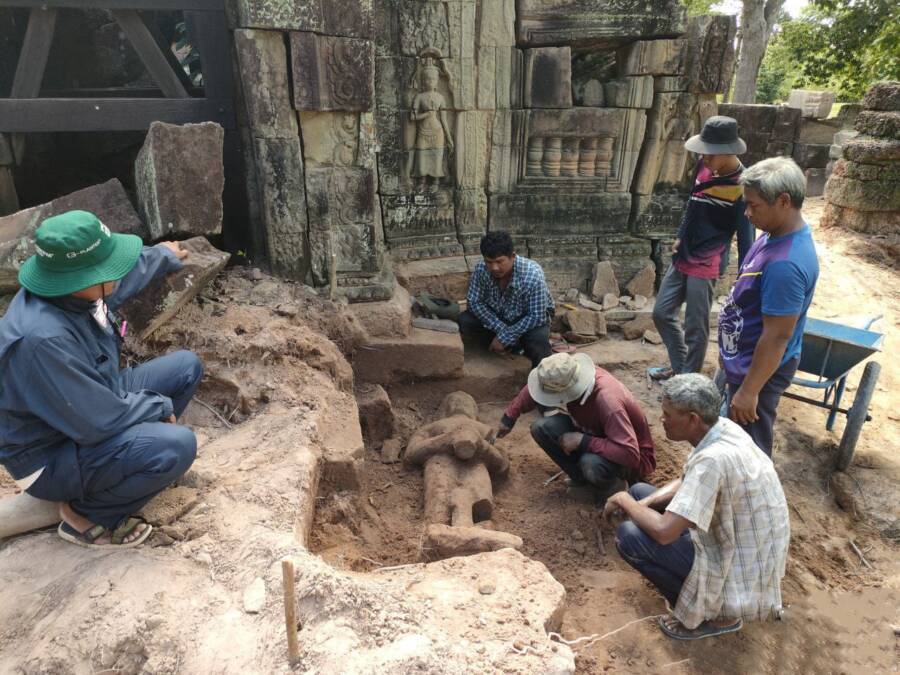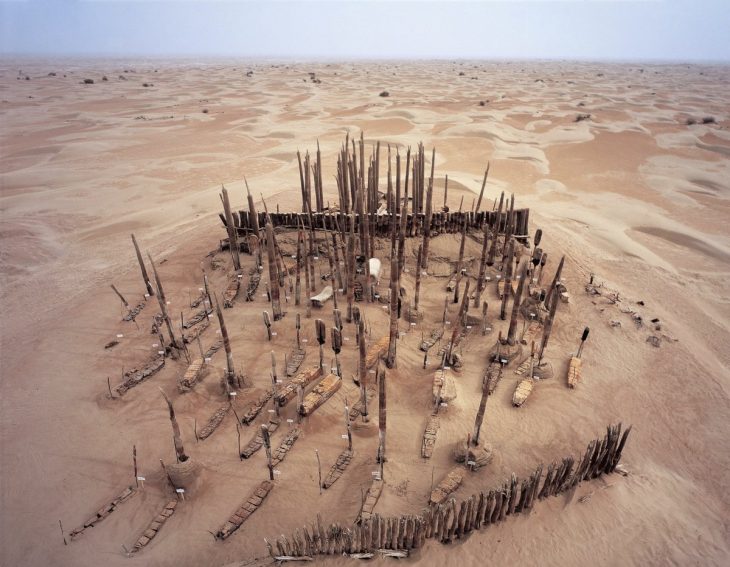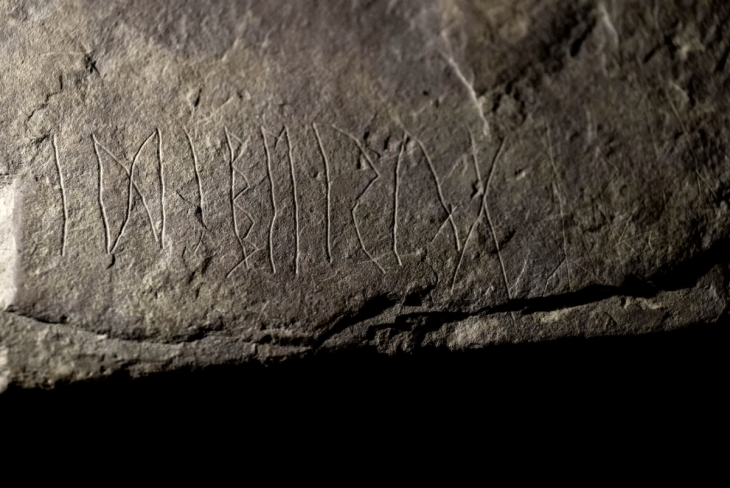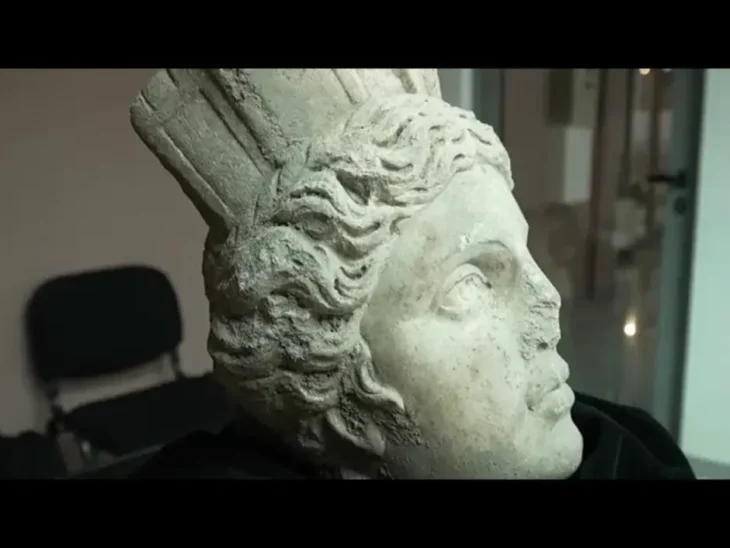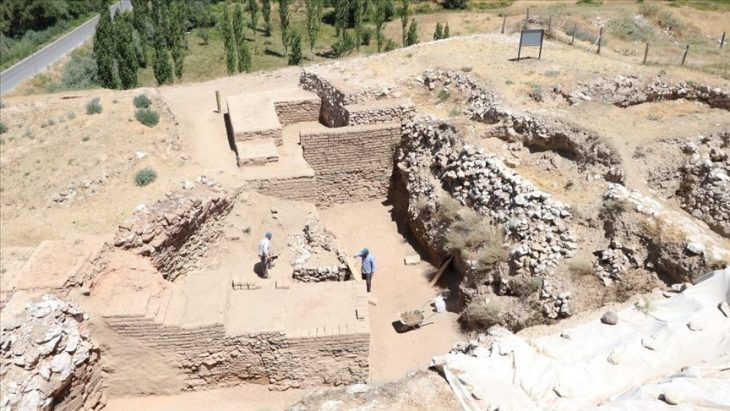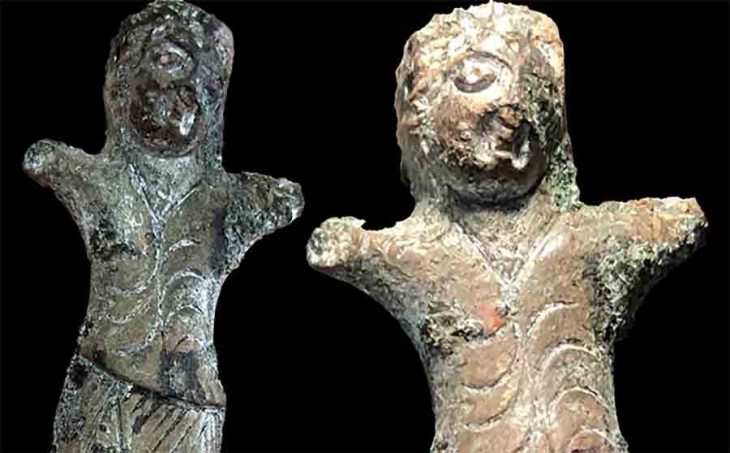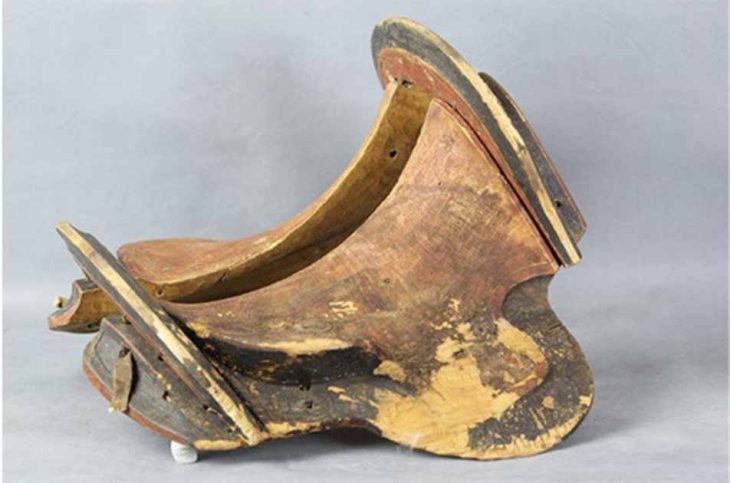While clearing rubble from a collapsed gate at the Banteay Prei Temple within Cambodia’s Angkor Wat Archaeological Park, workers stumbled upon a sandstone door guardian statue dating back 700 years.
Archaeologists believe the statue may have been buried when the upper structure of the temple collapsed. Despite some notable damage, the statue, known as a dvarapala, was still in near-complete condition when researchers found it.
The Dvarapala statues are a common architectural feature in Buddhist, Jaina, and Hindu cultures. These statues are typically depicted as warriors guarding sacred or regal sites with a weapon, like a mace. The five-feet and two-inches tall Angkor statue is broken into six pieces, and part of its protective stick is missing.
The statue is in the Bayon style, one associated with serene and mildly smiling Bramha faces that was adopted in the last state temples built at Angkor.
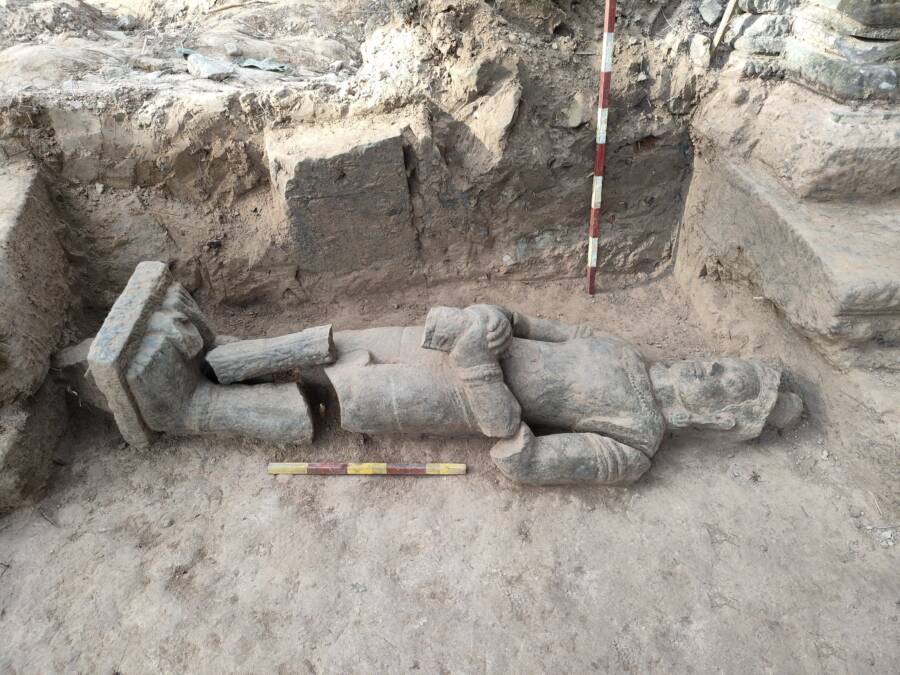
“A significant archaeological find has been made at the Banteay Prei Temple,” the Apsara National Authority (ANA) said in a statement. “The statue was located to the east of the temple’s second gate, buried approximately 80 centimeters (~31 inches)under the ground.”
📣 Our WhatsApp channel is now LIVE! Stay up-to-date with the latest news and updates, just click here to follow us on WhatsApp and never miss a thing!!
The closest significant temple to Banteay Prei is Preah Khan, and it is five miles north of the main Angkor temple complex. King Jayavarman VII constructed the temples of Preah Khan and Banteay Prei in the late 1200s or early 1300s as a tribute to his father.
“The sandstone gate guardian will now be stored at the Preah Norodom Sihanouk-Angkor Museum,” Angkor Wat’s heritage police said in a statement. “It will be preserved and studied further.”
The discovery of this guardian statue is just the latest in a series of fascinating discoveries at Angkor Wat Archaeological Park, which comprises more than 250 square miles.
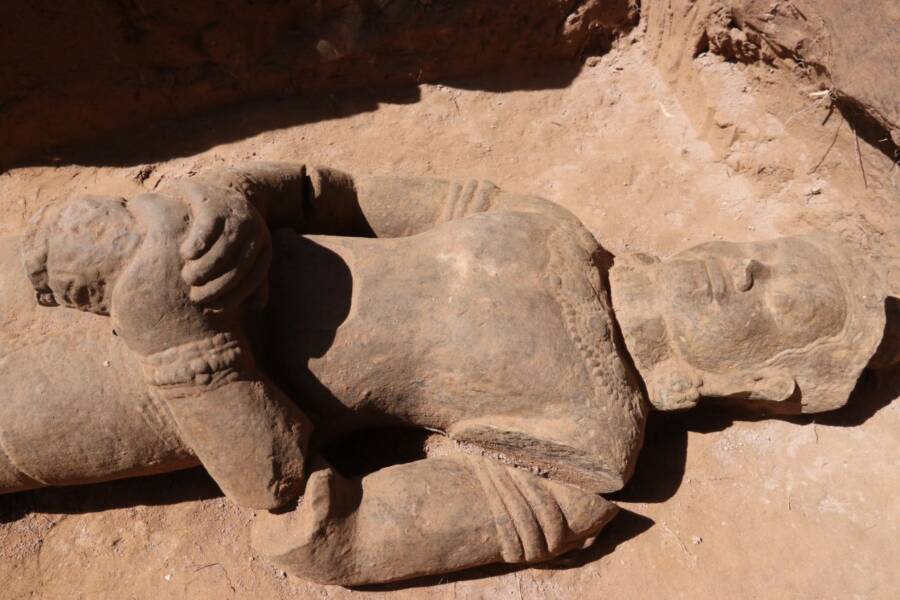
For instance, earlier this year, Xinhua reported that during an excavation at the Ta Prohm temple within the park, archaeologists found more than 100 Buddhist statues. Buddha was portrayed in these statues in a variety of poses, frequently sitting cross-legged, and in different sizes. They were created in the late 12th and early 13th centuries in the Bayon style, just like the guardian statue.
Angkor Wat welcomes hundreds of thousands of tourists each year and has been a UNESCO World Heritage site since 1992.
Cover Photo: Phouk Chea/Chea Sarith

